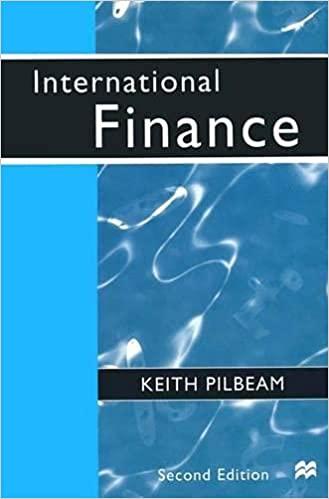Answered step by step
Verified Expert Solution
Question
1 Approved Answer
Assume you wish to evaluate the risk and return behaviors associated with various combinations of two stocks, Alpha Software and Betac. If the returns of
Assume you wish to evaluate the risk and return behaviors associated with various combinations of two stocks, Alpha Software and Betac. If the returns of assets Alpha and Beta are perfectly negatively correlated correlation coefficient over what range would the average
return on portfolios of these stocks vary? Calculate the standard deviation of a portfolio that invests in Alpha and in Beta.
Data table
Click on the icon here
a spreadsheet.
Electronics, under three possible degrees of correlation: perfect positive, uncorrelated, and perfect negative. The average return and standard
deviation for each stock appears here:
a If the returns of assets Alpha and Beta are perfectly positively correlated correlation coefficient over what range would the average return
on portfolios of these stocks vary? In other words, what is the highest and lowest average return that different combinations of these stocks could
achieve? What is the minimum and maximum standard deviation that portfolios Alpha and Beta could achieve?
b If the returns of assets Alpha and Beta are uncorrelated correlation coefficient over what range would the average return on portfolios of
these stocks vary? What is the standard deviation of a portfolio that invests in Alpha and in Beta? How does this compare to the standard
deviations of Alpha and Beta alone?
c If the returns of assets Alpha and Beta are perfectly negatively correlated correlation coefficient over what range would the average
return on portfolios of these stocks vary? Calculate the standard deviation of a portfolio that invests in Alpha and in Beta.
a If the returns of assets Alpha and Beta are perfectly positively correlated correlation coefficient the range is
between and Round to one decimal place.
The range of the standard deviation is between and Round to one decimal place.
b If the returns of assets Alpha and Beta are uncorrelated correlation coefficient the range is between and Round to one
decimal place.
The standard deviation of a portfolio that invests in Alpha and in Beta is
Round to two decimal places.Data table
Click on the icon here in order to copy its contents of the data table below into
a spreadsheet.

Step by Step Solution
There are 3 Steps involved in it
Step: 1

Get Instant Access to Expert-Tailored Solutions
See step-by-step solutions with expert insights and AI powered tools for academic success
Step: 2

Step: 3

Ace Your Homework with AI
Get the answers you need in no time with our AI-driven, step-by-step assistance
Get Started


